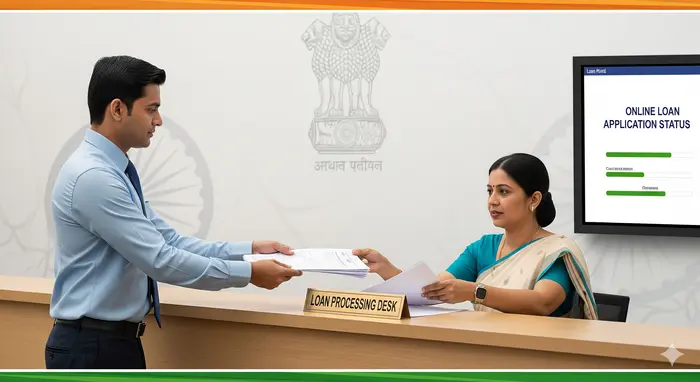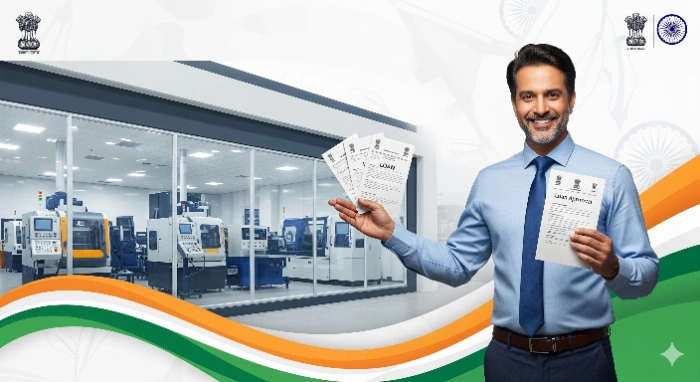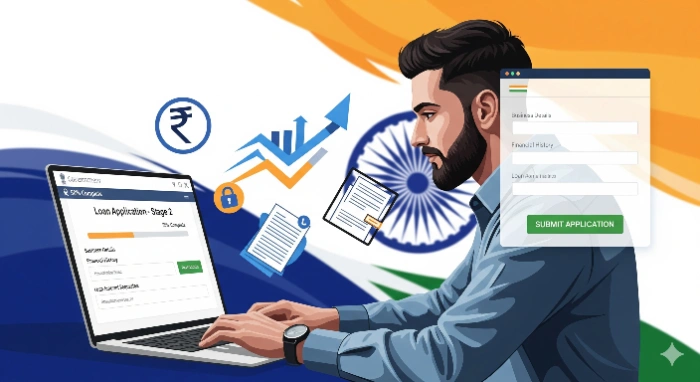Entrepreneurs who have already availed of financial support under government-backed schemes often face the challenge of meeting fresh capital requirements as their businesses grow. To address this, the government allows an Application for Existing Units (2nd Loan), enabling eligible business owners to expand operations, modernise equipment, or strengthen working capital. This facility provides a second financial boost to enterprises that have demonstrated consistent performance after receiving their first loan. In this article, we explain the eligibility criteria, documents required, benefits, and the step-by-step process for applying in 2025.

Key Highlights of Application for Existing Units (2nd Loan)
| Feature | Details |
|---|---|
| Purpose | Financial support for expansion, modernisation, and strengthening of existing units |
| Beneficiaries | Entrepreneurs who have already availed loan under approved government schemes |
| Loan Type | Second loan for eligible existing units |
| Benefits | Business growth, working capital support, technology upgrades |
| Year Applicable | 2025 onwards |
Importance of the Second Loan Facility
The second loan facility plays a critical role in ensuring business continuity. Many micro and small enterprises initially receive support to set up their unit but often require further funding once operations stabilise. Costs such as machinery upgrades, hiring skilled staff, enhancing infrastructure, or scaling production are common reasons. Without this provision, many entrepreneurs may face stagnation.
By allowing an Application for Existing Units (2nd Loan), the government ensures that businesses not only survive but also thrive in competitive markets. This also contributes to employment generation, economic development, and sustainable entrepreneurship.
Eligibility Criteria for Application Existing Units (2nd Loan)
Not every entrepreneur qualifies automatically for the second loan. The following eligibility conditions generally apply:
- The applicant must have already established a business with the help of the first loan.
- The unit should have been operational for at least 18 months or as specified by the financing institution.
- Repayment track record of the first loan must be satisfactory, with no defaults.
- The business should demonstrate a requirement for expansion, diversification, or modernisation.
- Only certain categories of entrepreneurs (such as micro, small enterprises, or those registered under specific schemes) may be considered.
These eligibility rules ensure that the financial assistance is extended only to genuine and performing businesses.
Documents Required for Application Existing Units (2nd Loan)

Applicants must prepare a detailed set of documents when filing for the second loan. Typically, the following are necessary:
- Duly filled application form for existing units (2nd loan).
- Identity proof (Aadhaar card, PAN card).
- Address proof of entrepreneur and business.
- Copy of first loan sanction letter and repayment history.
- Detailed project report for proposed expansion or modernisation.
- Bank statements of the existing unit.
- Proof of unit registration (MSME certificate, trade licence, etc.).
- Quotation or proforma invoice for machinery or equipment (if applicable).
Submitting complete and accurate documents speeds up the approval process.
Step-by-Step Process to Apply in 2025
- Collect Information
Understand the requirements, eligibility, and purpose of the second loan. - Prepare Documentation
Gather all necessary proofs, repayment history, and a new project plan. - Fill the Application Form
Access the official loan application portal or visit the financing institution to collect the form. Ensure all details are filled correctly. - Attach Supporting Documents
Submit identity, business, and financial documents along with the application. - Submit to the Authority
File the application with the concerned bank, KVIC office, or nodal agency as directed. - Verification and Appraisal
Authorities will review your repayment record, business performance, and project feasibility. - Approval and Sanction
Once approved, the loan amount is sanctioned and disbursed directly to the business account.
This process ensures transparency and fair assessment for all applicants.
Benefits of Applying for the Second Loan
- Business Expansion – Entrepreneurs can scale up their existing units to meet growing demand.
- Technology Upgrade – Financial support helps modernise equipment and adopt better processes.
- Employment Generation – Expansion leads to the creation of additional job opportunities.
- Stronger Market Position – Units can compete effectively with improved resources.
- Smoother Operations – Additional working capital ensures uninterrupted business functioning.
By leveraging this facility, enterprises can secure long-term sustainability.
Common Challenges in Application
While the facility is beneficial, applicants may face certain challenges:
- Documentation Errors – Incomplete or incorrect paperwork delays processing.
- Repayment Defaults – A poor repayment record on the first loan often leads to rejection.
- Project Feasibility Issues – Weak or unrealistic project plans reduce chances of approval.
- Limited Awareness – Many entrepreneurs remain unaware of the second loan facility.
To overcome these issues, applicants must carefully prepare documents, maintain financial discipline, and seek guidance from nodal agencies.
Government’s Role in Supporting Second Loan Applications
The government, through nodal agencies and financial institutions, ensures smooth facilitation of second loans. By encouraging business expansion, this facility directly contributes to strengthening the MSME sector. Training programmes, awareness campaigns, and simplified digital platforms have been introduced to make the application process more accessible in 2025.
Practical Tips for a Successful Application
- Maintain Good Repayment Track Record – Always pay EMIs of the first loan on time.
- Prepare a Strong Project Report – Highlight realistic revenue forecasts and expansion plans.
- Seek Professional Guidance – Financial advisors or government officials can guide you.
- Apply Online Where Possible – Digital applications are faster and reduce paperwork.
- Keep Documents Updated – Ensure all registrations, licences, and certificates are current.
Following these tips significantly increases the chances of approval.
Case Study Example
Consider an entrepreneur who set up a textile unit in 2022 with a government-backed loan. After three years of steady operations, the business owner identifies growing demand in neighbouring districts. To expand production capacity, he applies for an Application for Existing Units (2nd Loan) in 2025. With a clean repayment record and a clear project report, the loan is sanctioned. This allows the entrepreneur to purchase additional machinery, hire more workers, and scale up operations successfully.
Future Outlook in 2025 and Beyond

With the Indian economy rapidly evolving, the demand for credit among small enterprises is expected to rise. The Application for Existing Units (2nd Loan) is likely to play a significant role in supporting entrepreneurial growth. As more businesses seek expansion, this facility will ensure that financial bottlenecks do not hinder progress. Government initiatives are also focusing on digitalisation, which will make applying for such loans even simpler and quicker.
Conclusion
The Application for Existing Units (2nd Loan) is a vital support system for entrepreneurs who wish to expand and modernise their businesses after initial success. By ensuring financial access to performing units, the government encourages long-term sustainability, economic growth, and job creation. With proper preparation, clear documentation, and responsible financial behaviour, business owners can easily secure approval for their second loan in 2025 and beyond.
Read More: PMEGP Apply Online in 2025 – Step-by-Step Guide for Easy Application
Read More: PMEGP Application Status by Name – Instantly Track Your Approval ( 2025 )
Read More: PMEGP Project Report – 100+ Proven Business Ideas with Subsidy
Verified Portals for Public Interest
- 1stHEADLINE.COM — Stay updated with top news, entertainment, and current affairs. Trusted journalism meets verified updates.
- MYTAMPANOW.COM — Local Tampa news and community stories. Your city, your headlines.
- EDPTRAININGS.IN — EDP and PMEGP training resources designed for entrepreneurs across India.
- 99FABRICS.IN — Premium supplier of lining, canvas, and jute materials trusted by garment professionals.
- WBINDIA.IN — Easy access to simplified updates on Central and State Government welfare schemes.
- KHADYASATHI.IN — Official West Bengal food and ration services portal for citizens.
- RATIONCARDINDIA.COM — Nationwide guide to ration card details, status updates, and EPDS services.
- EPDS2.RATIONCARDINDIA.COM — Reliable access point for public distribution and ration services.
- BANGLASTUDENTCREDITCARD.IN — State-backed education loan details for students in West Bengal.
- PURIHOTELBOOKING.CO.IN — Discover and book verified hotels and accommodations in Puri, Odisha.
- BANGLASHASYABIMA.NET.IN — Accurate details on crop insurance and benefits for West Bengal farmers.
- FIRSTHOMEOWNERGRANTS.COM — Helping first-time buyers in Australia with home grants and property insights.
- REGOCHECKER.COM — Quick car registration and history checks for Australian vehicle owners.
- USAFEDERALGRANTS.COM — Federal grant programs and financial aid opportunities in the United States.
- CARDYATRA.COM — India’s go-to platform for comparing credit cards, offers, and financial products.
- PMEGPEPORTAL.COM — A transparent source for checking your PMEGP loan status and progress.
- BESTUSCARACCIDENTLAWYERS.COM — Find trusted legal professionals specializing in car accident claims across the US.


Pingback: PMEGP Score Card 2025 – Check Your Eligibility & Loan Approval Chances Instantly | PMEGP E-Portal